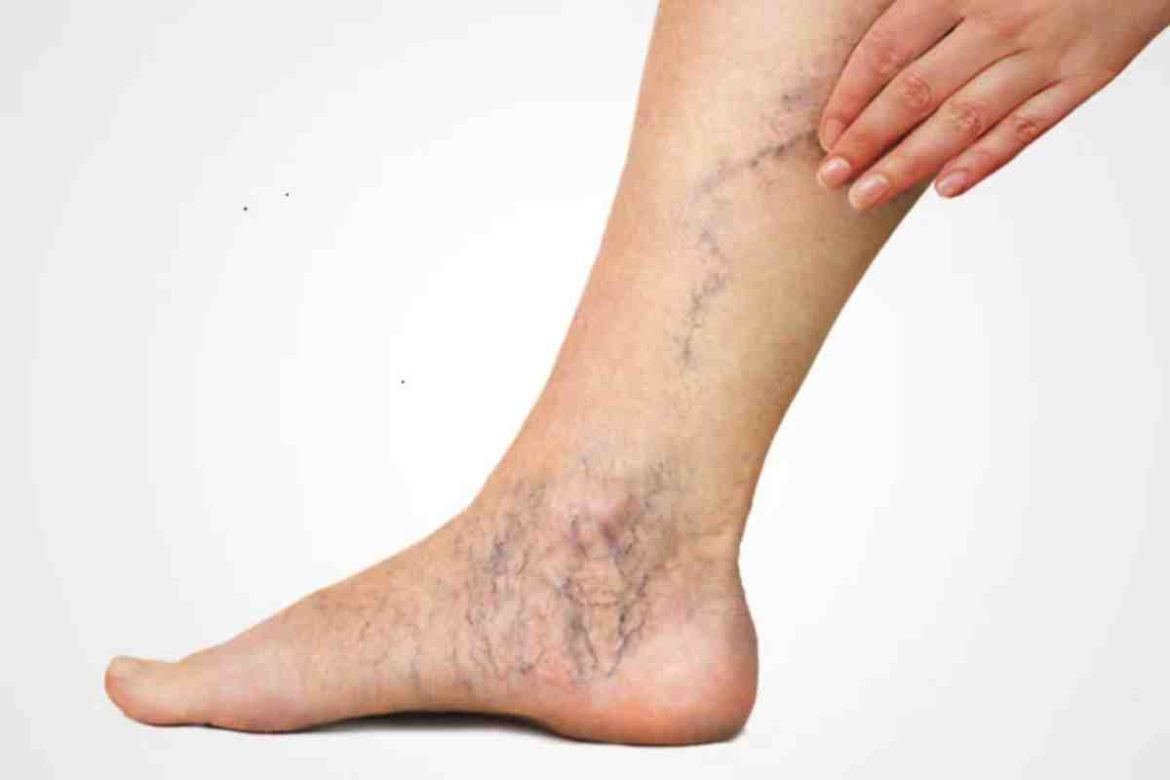Introduction
Varicose veins are swollen, twisted veins that often appear in the legs. They occur when the valves in the veins don’t function properly, causing blood to pool instead of flowing back to the heart. This condition is quite common, affecting about 23% of adults in the U.S. Hopkins Medicine.
Varicose veins may seem cosmetic in nature, but they can actually pose serious medical challenges including discomfort and mobility issues as well as ulcers or blood clots if left unaddressed. Recognizing and managing this issue early can help avoid these outcomes and drastically improve quality of life.
Recognizing the impact on overall well-being is crucial for seeking timely and effective treatment.
How Varicose Veins Affect Health and Well-Being
Physical Discomfort and Mobility Challenges
Varicose veins often cause symptoms including aching, swelling and heavy feeling legs. This pain may worsen after standing or sitting for long periods, restricting movement and leading to discomfort when performing everyday tasks.. According to the Mayo Clinic, these symptoms can also interfere with sleep, causing issues like leg cramps and restless leg syndrome.
Complications Beyond Discomfort
Varicose veins left untreated can progress into more serious health issues, including venous ulcers, deep vein thrombosis (DVT), and skin ulcers. Chronic Venous Insufficiency (CVI), where blood flow consistently remains poor, also increases the risk of more serious health concerns.
Emotional and Mental Health Impacts
Varicose veins can have a negative emotional impact. Visible veins may create body-image issues for women in particular and decrease self-esteem; untreated varicose veins may even impose physical restrictions that aggravate stress levels further, exacerbating stress even further. It is therefore vitally important that timely treatment is sought as soon as possible to alleviate both physical and emotional burdens caused by varicose veins.
Understanding Causes and Risk Factors
Primary Causes of Varicose Veins
Varicose veins occur when the valves in your veins become weak, leading to blood pooling in your veins instead of flowing toward your heart and draining away as intended. Varicose veins may result from genetics, aging, prolonged standing or sitting time, obesity or pregnancy- all factors which put extra strain on veins.Mayo Clinic.
Who Is at Risk?
People with a family history of varicose veins, older adults and pregnant women are at an increased risk. Lifestyle factors like lack of exercise and sedentary behavior may also increase this likelihood, and recognising these risks early can assist with prevention and management strategies.
Effective Treatments for Varicose Veins
Conservative Treatments
Initial treatment for varicose veins typically includes lifestyle modifications. Exercise, managing body weight and elevating legs are often effective measures in relieving symptoms. Wearing compression stockings also provides some relief as they promote circulation by applying gentle pressure against legs. While these methods may help alleviate discomfort temporarily, they don’t address the root issue: weak vein valves.
Minimally Invasive Solutions
Minimally invasive options include sclerotherapy, in which a solution is injected directly into an affected vein to cause it to collapse and gradually fade over time. Radiofrequency ablation (RFA) or laser treatments also use heat energy to close off varicose veins so blood can reroute through healthier ones more quickly; both procedures offer quick recoveries with no scarring and high success rates.For expert care, consider consulting a Denver vein specialist to explore the best treatment options for your condition.
Surgical Options for Severe Cases
For severe cases, more traditional surgical procedures, like vein stripping and ligation may be required; this involves extracting or tying off problematic veins. However, advances in minimally invasive techniques have significantly decreased the need for such procedures, making treatments both less invasive and more effective overall.
Prevention and Long-Term Health
Daily Habits to Prevent Varicose Veins
Adopting healthy habits can significantly lower the risk of varicose veins. Regular exercise, maintaining a healthy weight and limiting long periods of standing or sitting are key. Elevating legs when sitting or relaxing may promote better circulation and wear compression stockings can provide extra support to reduce varicose vein risk for those at greater risk of varicose veins.
Importance of Early Treatment
Detecting varicose veins early can prevent complications. Regular checkups allow for monitoring vein health and addressing early signs of venous disease, potentially avoiding the need for invasive treatments later Mayo Clinic.
Conclusion: Taking Control of Your Vein Health
Varicose veins can be more than a cosmetic concern. They can cause significant discomfort and limit mobility. Early treatment can prevent further complications while improving both physical and emotional wellbeing – it helps you remain active while improving both physical and emotional well-being. Seek medical advice about available solutions from vein specialists for long-term relief.


